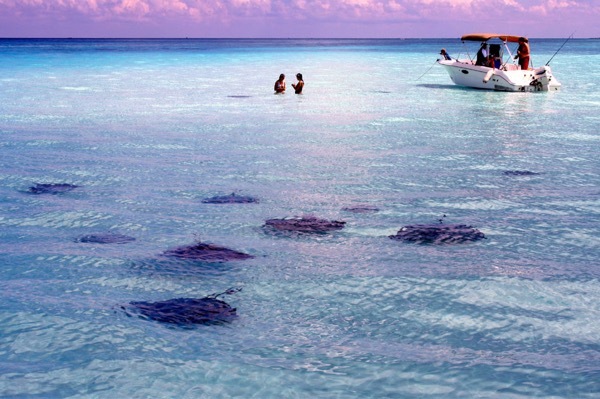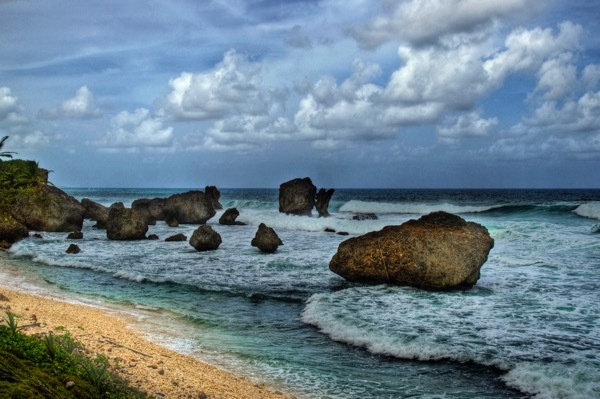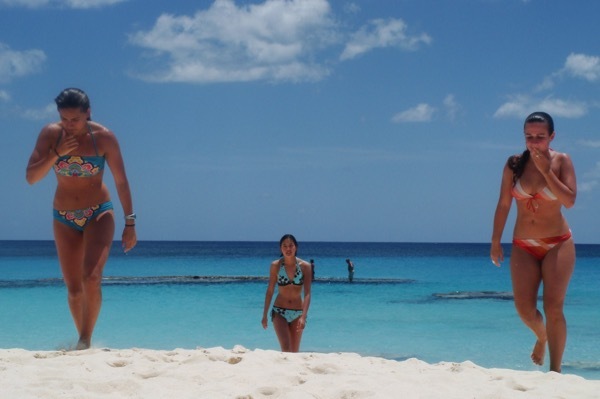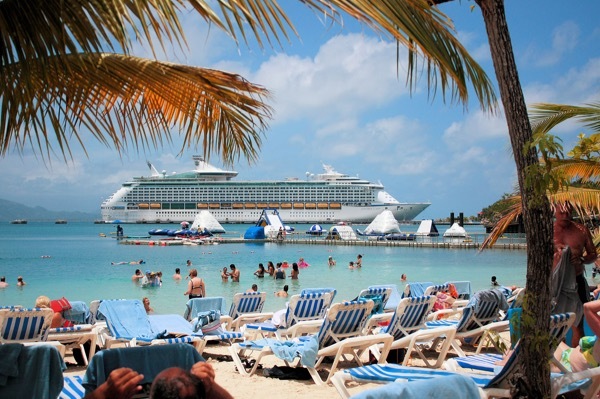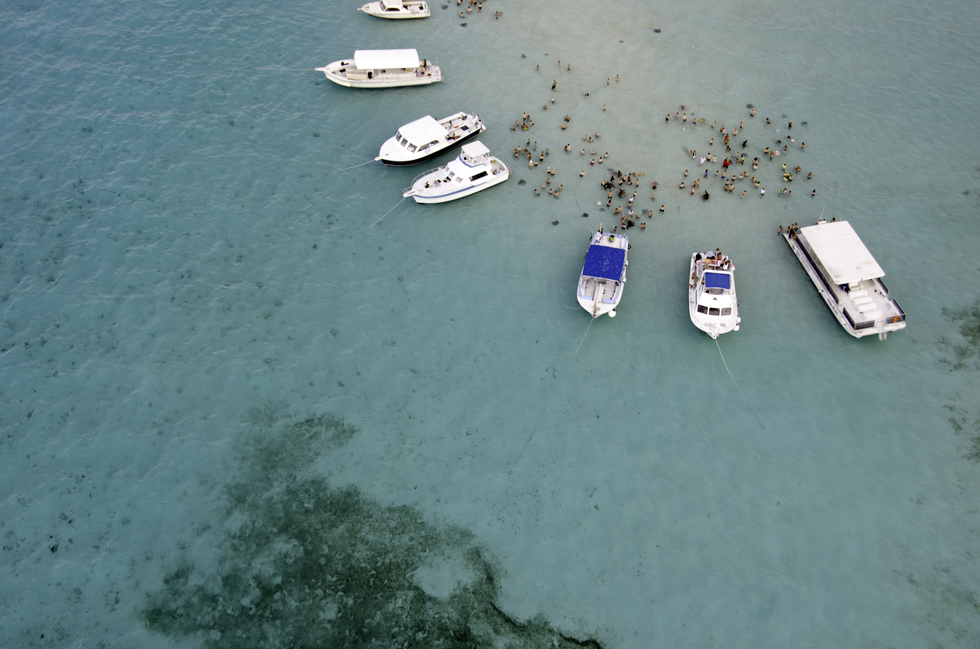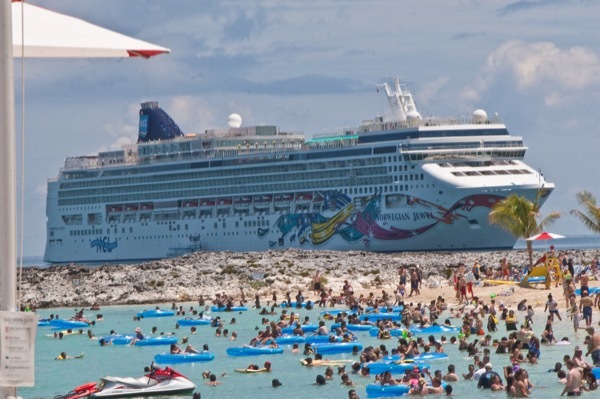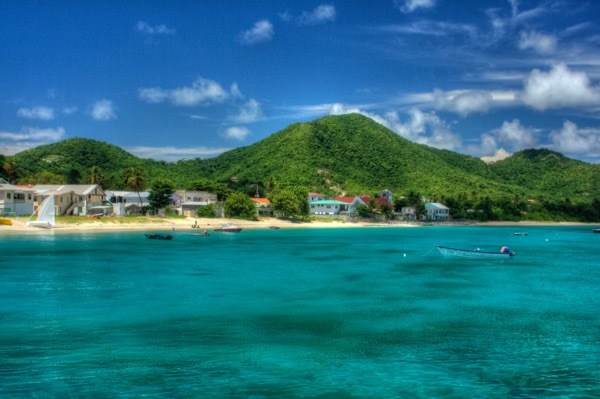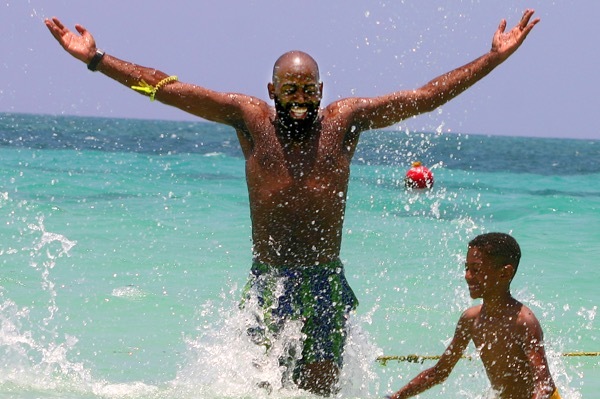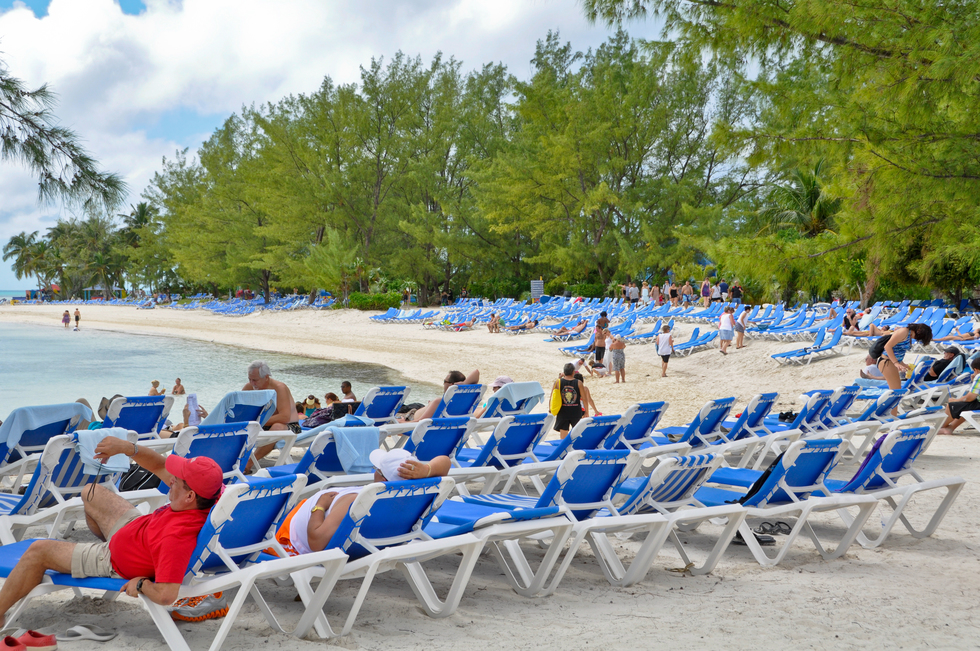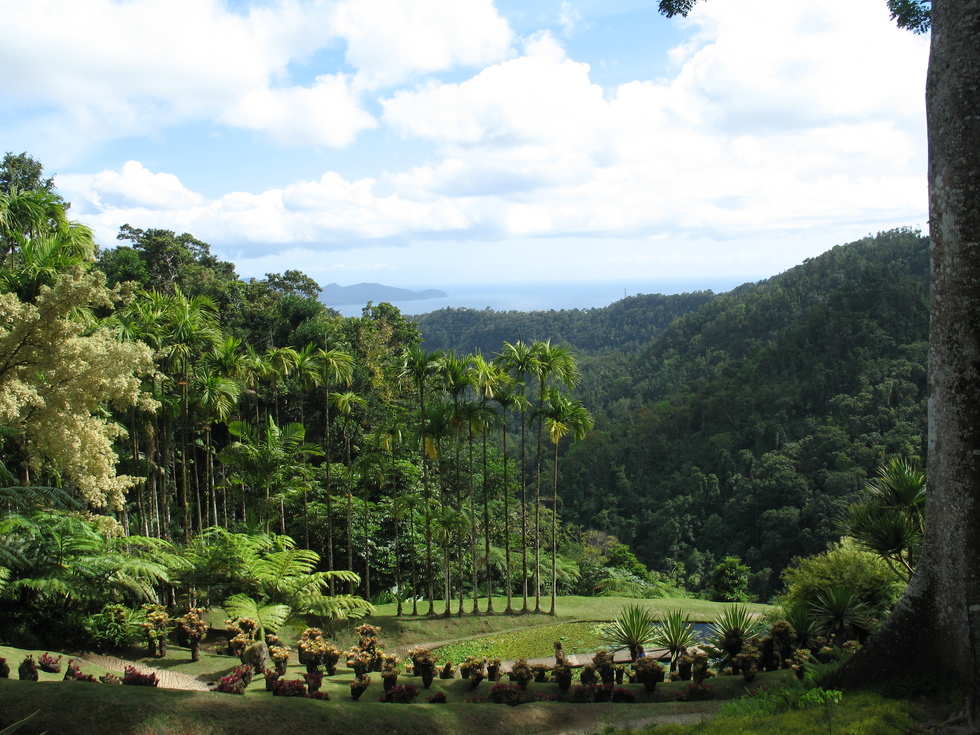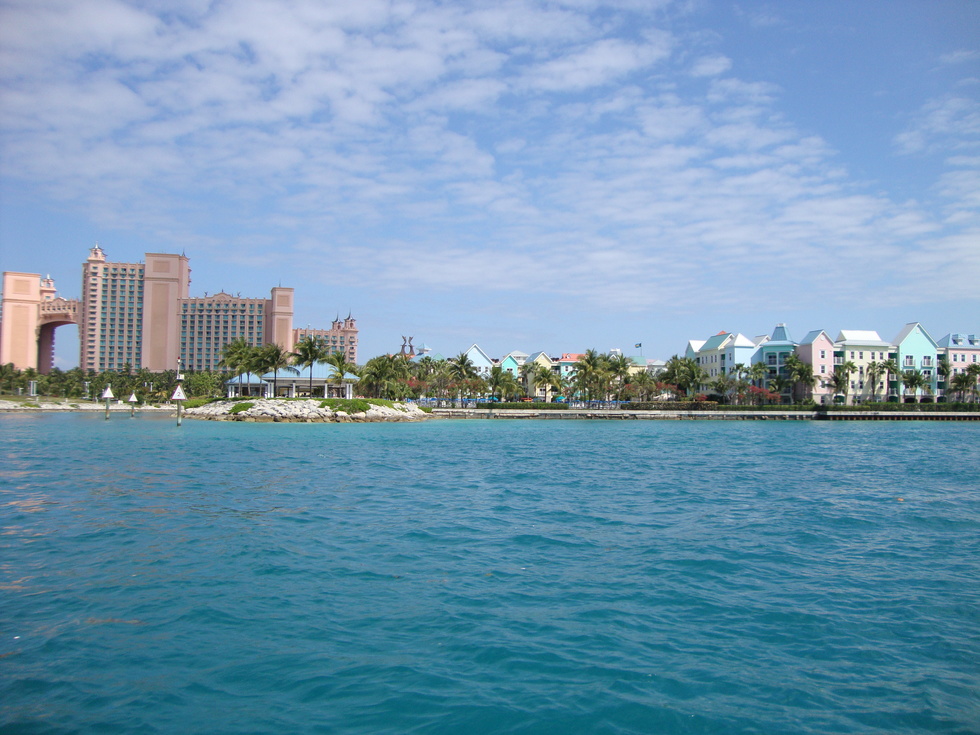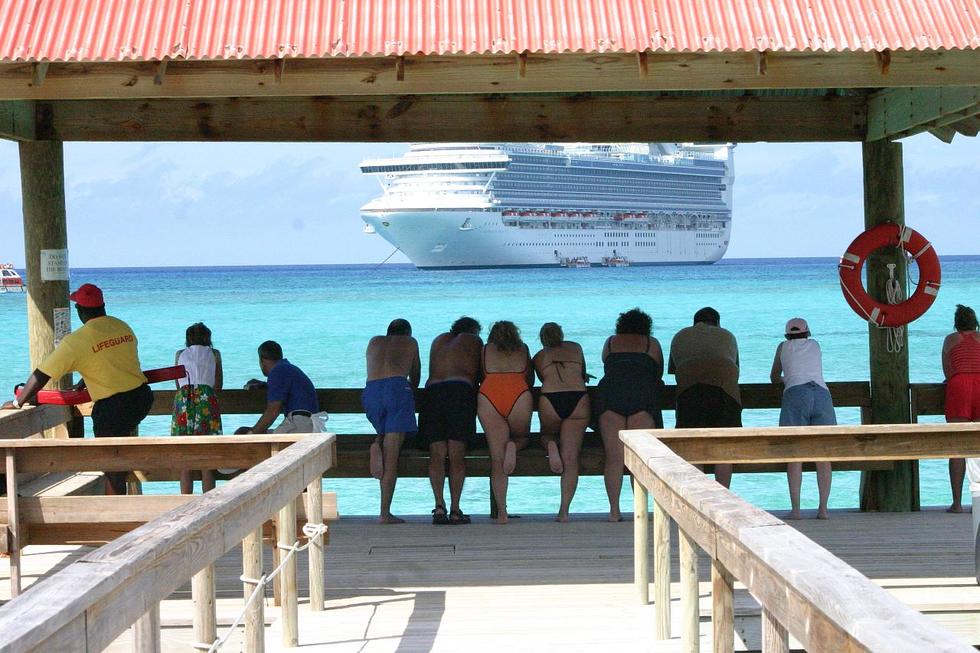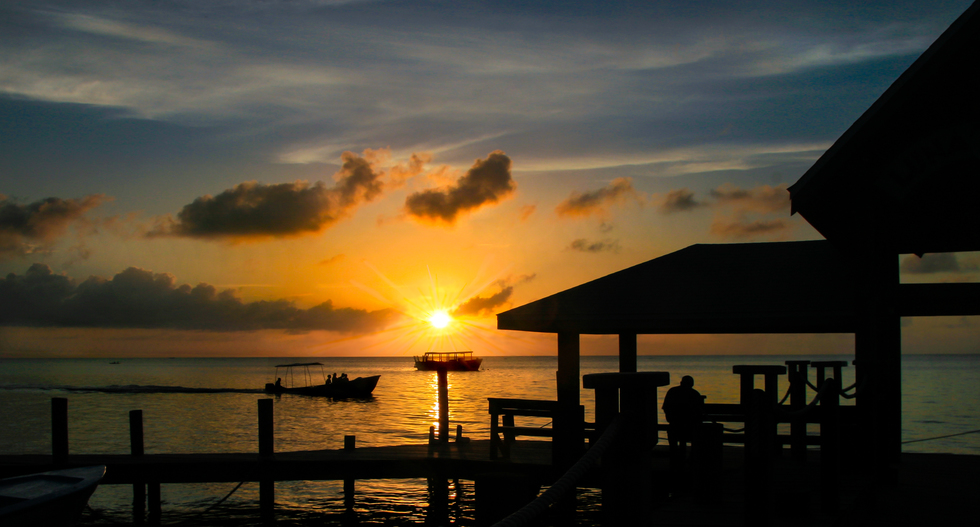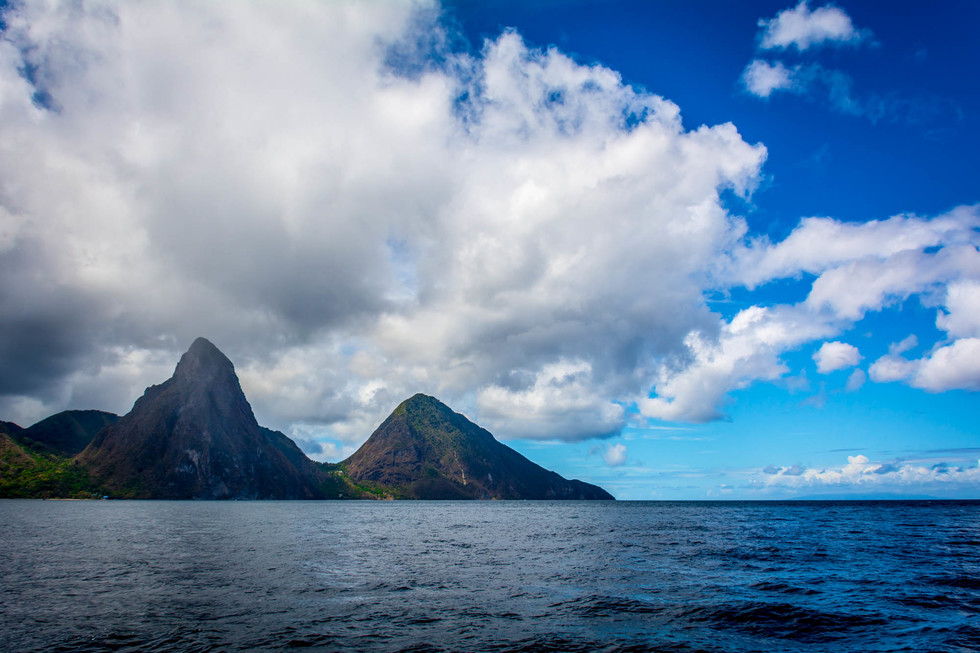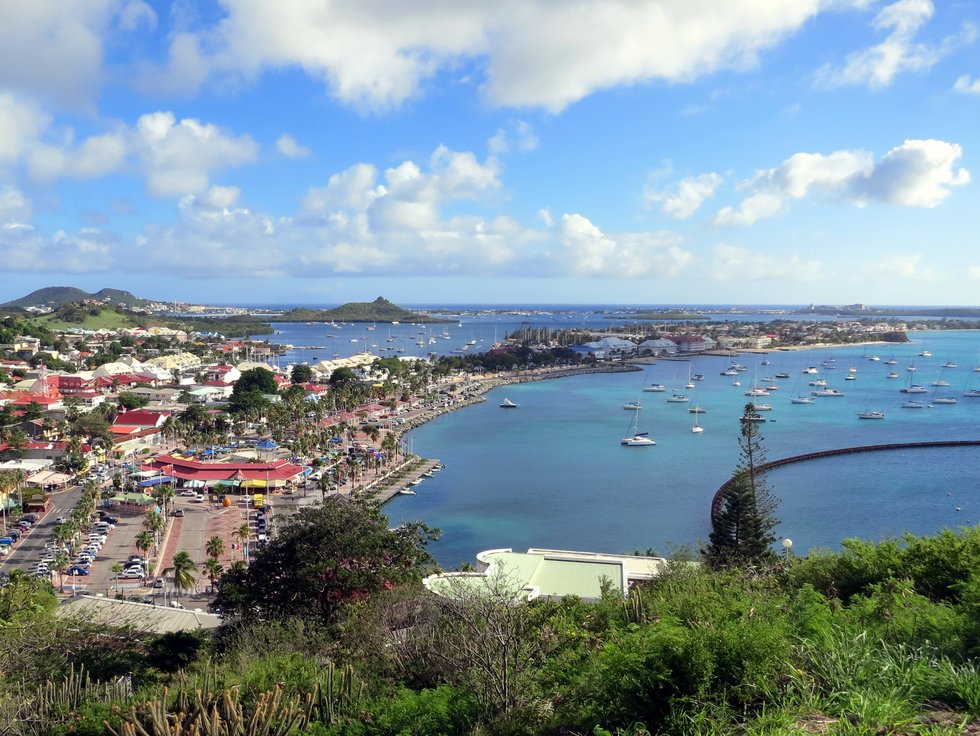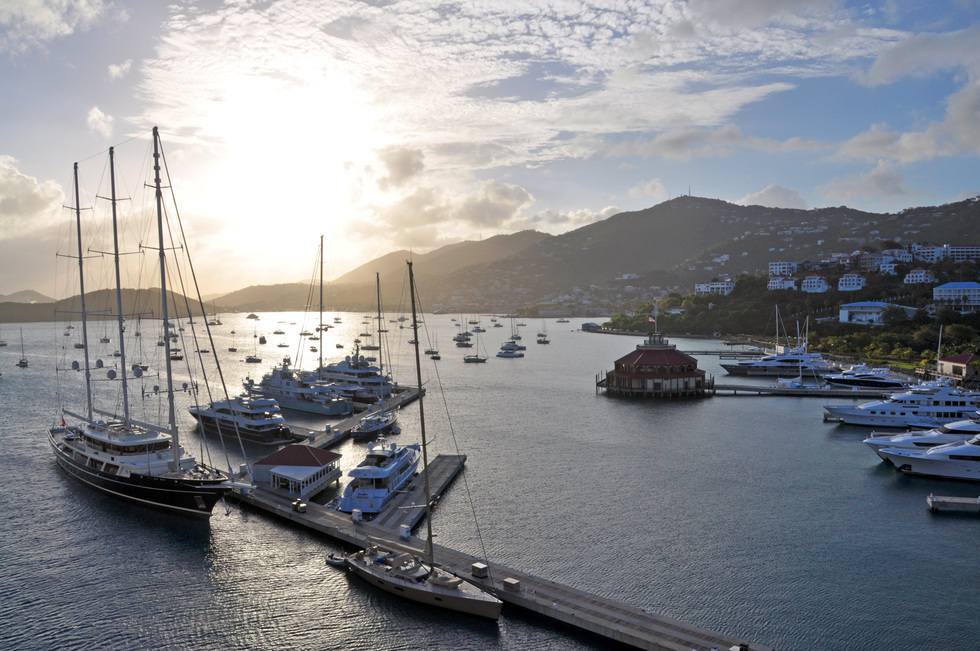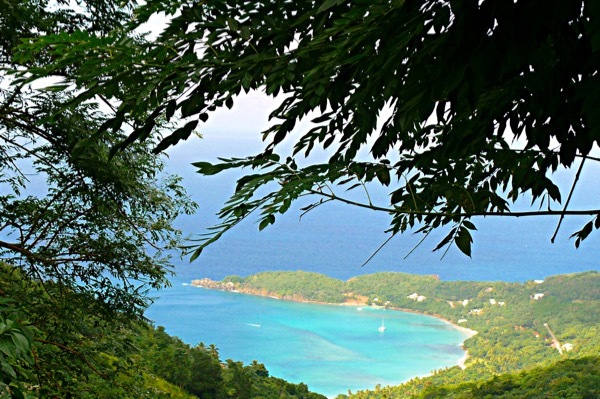What to Do, What to Buy in the Top Caribbean Cruise Ports
By Heidi SarnaAll of the Caribbean is hosting more business from bigger and bigger ships—and more of them at once. It’s harder than ever to find the unspoiled, uncrowded corners of the islands, though they still exist. Here, you'll find rundows of all the major ports in alphabetical order from Antigua to Virgin Gorda, including several of the cruise lines' private islands—so you'll know which cruise itinerary to book.
Best Activities:
An Off-Roading Jeep Safari through the island’s only remaining rainforest with stops at the ruins of forts, sugar mills, plantation houses, plus time at the beach.
Touring Nelson’s Dockyard National Park, which lies 18km (11 miles) southeast of St. John’s alongside one of the world’s best-protected natural harbors. The dockyard played a major role during the 18th century, an era of privateers, pirates, and great sea battles; today it’s home to historic sights and a museum. The grounds of the national park, which represent 10 percent of Antigua’s total land area, are also well worth exploring. Bordered on one side by sandy beaches, the park offers an array of nature trails, which take anywhere from 30 minutes to 5 hours to walk and provide vistas of the coast.
Devil’s Bridge: It's one of Antigua’s most picturesque natural wonders. Over the centuries, powerful Atlantic breakers, gathering strength over the course of their 4,830km (3,000-mile) run from Africa, have carved a natural arch in the limestone coastline and punched blowholes through which the surf spurts skyward at high tide.
Hiking Wallings Conservation Area, Antigua’s largest remaining tract of tropical rainforest. Located in the southwest, this lush wilderness area provides three hiking trails and numerous opportunities to spot wildlife (including many Caribbean birds) and rich vegetation.
Watersports: Antigua’s dive sites include reefs, wall drops, caves, and shipwrecks.
Beaches: Antiguans claim that the island is home to 365 beaches, one for each day of the year. True or not, all of them are public, and quite a few are spectacular.
Shopping: Redcliffe Quay is Antigua’s most interesting shopping complex. Most of the sugar, coffee, and tobacco produced on the island in years past was stored in the warehouses here, and slave auctions were common before the island abolished slavery in 1834. Today, the restored buildings house an array of boutiques and restaurants. For more local color, turn right (south) once you’ve reached Market Street and walk 5 blocks to the Public Market, which is a good place to sample locally produced fruits and vegetables or to pick up some Antiguan pottery or baskets. Other shopping districts include Heritage Quay, right at the dock, and St. Mary’s Street.
Best Activities:
Shopping: The concentration of stores and malls in Oranjestad, the island’s capital, is as impressive as any in the Caribbean. Because the island is part of the Netherlands, Dutch goods such as Delft porcelain, chocolate, and cheese are especially good buys. Items from Indonesia, another former Dutch colony, are reasonably priced, too. Skin- and hair-care products made from locally produced aloe are also popular and practical. If you’re looking for big-ticket items, shops have the usual array of watches, cameras, gold and diamond jewelry, Cuban cigars, premium liquor, porcelain, French and American fragrances, and designer shoes, bags, and clothing; the 3.3% duty and lack of sales tax make for some decent prices.
Gambling: Between purchases, try your luck at one of the island’s dozen casinos; two are just steps away from your ship.
Hiking in Arikok National Park: You’ll have to travel about 30 minutes by bus tour or self-drive Jeep to Aruba’s east end, where park rangers lead hikes through the desertlike environment, full of divi-divi trees, iguanas, cacti, and (if you can spot them) wild donkeys. After your hike, cool off with a swim or go snorkeling at Baby Beach.
Spelunking: Again, you’ll need wheels to get there, but the island’s most popular cave, Fontein Cave, is fascinating, filled with brownish-red drawings left by Amerindians and graffiti etched by early European settlers. Nearby Quadirikiri Cave boasts two large chambers; hundreds of small bats use the 30m-long (98-ft.) tunnel to reach their nests deeper in the cave.
Watersports: The island’s best snorkeling sites are around Malmok Beach (also a great windsurfing spot) and Boca Catalina, where the water is calm and shallow and marine life is plentiful. Dive sites stretch along the entire southern coast, but most divers head for the German freighter Antilla, which was scuttled during World War II off the island’s northwestern tip, near Palm Beach.
Beaches: All of Aruba’s beaches are public, but chairs and shade huts are hotel property. If you use them, expect to be charged. Palm Beach, home of Aruba’s high-rise hotels, is great for swimming, sunbathing, sailing, people-watching, fishing, and snorkeling. It has numerous watersports operators, and can get crowded. Separated from Palm Beach by a limestone outcrop, Eagle Beach stretches as far as the eye can see. The sugar-white sand and gentle surf are ideal for swimming; nearby hotels offer watersports and beach activities.
Best Activities:
Mount Gay Rum Distillery Tour: This excursion takes you for a tour and tipple at Barbados’s top rum distillery; on Wednesdays it features a cocktail class along with the tour.
Harrison’s Cave is a popular day trip, with visitors touring this handsome set of caverns aboard an electric tram and trailer. You’ll need wheels to get there, but if you make it there, head an additional 1.6km (1 mile) to the Flower Forest, Richmond Plantation, a former sugar plantation that’s now a junglelike botanical garden, with paths winding among huge tropical flowers and plants.
The Sunbury Plantation House, 25 minutes from Bridgetown along Highway 5, is the only plantation great house on Barbados whose rooms are open for viewing. The 300-year-old house is steeped in history, with mahogany antiques, old prints, and a collection of horse-drawn carriages.
Beaches: Beaches on the island’s western Gold Coast are far preferable (and closer to the ships) than those on the surf-pounded Atlantic side, which are dangerous for swimming. All Barbados beaches are open to the public, even those in front of the big resort hotels and private homes. You’ll need a good pair of walking shoes or a taxi to get to them, but the baby-powder sand between your toes makes the effort well worth it.
Shopping: Within walking distance of the port are dozens of retail stores, duty-free shops, and vendors selling arts and crafts, jewelry, liquor, china, crystal, electronics, perfume, leather goods, plus great local hot sauce and yummy Punch de Crème (you can get a free sample before buying), a creamy rum drink. Among Barbados handicrafts, you’ll find lots of black-coral jewelry, but beware—because black coral is endangered, it’s illegal to bring it back to the United States.
Both Ambergris Caye and Caye Caulker are popular with visitors, but require a flight or ferry from Belize City. However, smaller lines such as Windstar may skip Belize City completely and anchor offshore from the cayes and other parts of the mainland, such as southern Dangriga and Placencia.
Best Activities:
Exploring Lamanai: Lamanai is one of the largest ceremonial centers in Belize, and not near to port, but doable either with one of the ship’s excursions or with an outside company. In the original Mayan language, its name means "submerged crocodile," and various crocodile carvings are seen throughout the site. After a 45-minute drive, you’ll board a riverboat and head up the New River. Along the way, through the mangroves, your guide will point out crocodiles basking in the sun, a variety of birds, and exotic flowers such as black orchids. Landing at the Lamanai grounds, you’ll have lunch and then tour the temples. More than 700 structures are here, most of them still buried beneath mounds of earth though some of temples are climbable. Look in the trees for toucans and spider monkeys playing or napping. You won’t mistake the roar of the howler monkey.
Visiting Xunantunich: This site, also called Maiden of the Rock, is near the Guatemalan border and so will require taking a tour or renting a car. It was a major ceremonial center during the classic Maya period. After crossing the river by hand-cranked ferry, you can explore six major plazas surrounded by more than 25 temples and palaces, including El Castillo (the castle), largest of the temples. Be sure to climb to the top—it’s well worth it for the amazing panoramic view.
Hol Chan Marine Reserve & Shark Ray Alley: Many visitors head north via an hour-long speedboat ride to Hol Chan (Mayan for "little channel"), 6.4km (4 miles) southeast of San Pedro on Ambergris Caye; snorkel the reef for about an hour; and then head off to the Shark Ray Alley dive site, about 5 minutes away, where you’ll see and pet dozens of southern stingrays and nurse sharks.
Cave Tubing & Jungle Trek: This takes place at Jaguar Paw, about an hour's drive from Belize City (there’s nothing really nothing in Belize City that compares with the attractions outside the city), where you take a 45-minute hike down a jungle trail where your guide will point out plants and trees used by the ancient Maya for medicinal purposes. When you get to the cave, your guide will hand out flashlights and inner tubes and set you afloat through the currents of the cave system.
Beaches: Compared to many other parts of the Caribbean, the beaches of Belize are not the biggest, the softest, or the widest, but they are relaxing, with very clear water. The best sunbathing is in the cayes and on the mainland to the south in Dangriga and Placencia. There are no beaches near Belize City.
Shopping: There's no shopping of note in Belize; save your money for other ports.
Best Activities:
Because Bermuda is relatively small and easy to get around, and because ships typically spend several days at its ports, you can access the following sights and excursions no matter where you're docked.
Biking the old railway tracks: Head to the rural West End to pedal along the path where the original Bermuda Railway once ran on narrow-gauge tracks. The tracks are gone, but a trail remains. You'll get views of the ocean and the island’s lush gardens and bird life. The flat route covers 8km to 13km (5–8 miles).
Snorkeling Trips: Board an organized boat tour and motor beyond the shore for Bermuda's best snorkeling. After an hour or so, the fun begins: The music is turned on, the dancing starts, and the bar opens as the boat heads back to port.
Golf: Reserve tee times for 18 holes at challenging courses such as Mid Ocean Golf Club, among the best in the world; Riddell’s Bay Golf & Country Club, a veritable golfing institution built in 1922; Port Royal Golf Course; and St. George’s Golf Club, designed by Robert Trent Jones, Jr.
Explore St. George's: Quaint and historic, St. George’s was the second English town established in the New World, after Jamestown in Virginia. King’s Square, also called Market Square or the King’s Parade, is the center of life. But because most ships are too big to dock here, this charming town is visited only by those taking a tour or willing to use a bus, ferry, or taxi (which helps keep the number of visitors down).
Beaches: The throngs head to the beaches, and for good reason. Many are powdery soft and some even pinkish (from crushed shells, corals, and other sea life); they’re easily accessible by taxi or motor scooter from Hamilton and St. George’s, and most are free. Horseshoe Bay, in Southampton Parish, is our top pick. Though you won’t have it to yourself because it’s so popular with other tourists, it has scenic rocky cliffs at its edges and a vast soft plane of sand in the middle.
Shopping: While St. George’s and the West End Dockyard both have souvenir shops, Hamilton is the center of Bermuda’s shopping universe. Here, it’s all about English (and some Irish) goodies such as porcelain, crystal, wool clothing, cashmere sweaters, and linens, and it’s within walking distance, right outside of the terminal. Don’t expect great deals, though—prices in Bermuda are generally on the high side.
Best Activities:
Biking and Parasailing: Adult- and child-size bicycles can be rented and there’s a path that lets you stretch those hamstrings, but don’t go looking for scenery or wildlife—at best, you’ll see the occasional bird or leaping lizard. There are also parasailing opportunities for a hefty fee.
Spa Treatments: You can enjoy massages in private cabanas open to a sea view (sign up for your appointment at the onboard spa on the first day of your cruise to ensure a spot).
Kid’s Club: Parents who want quiet time can drop preteens at Scuttle’s Cove, a supervised children’s center for ages 3 to 12, with activities including arts and crafts, music, theater, and scavenger hunts. An excavation site here allows kids to go on their own archaeological dig and make plaster molds of what they find—including a 35-foot reproduction of a whale skeleton. The Pelican Plunge floating platform has two slides and other water features, and there’s the Spring-a-Leak water park on shore as well with jets and geysers. Meanwhile, Mom and Dad can walk, bike, or hop the shuttle to quiet, secluded Serenity Bay, a mile-long stretch of beach in the northwest part of the island at the end of an old airstrip decorated with vintage prop planes.
Beaches: Families can head to their own beach lined with lounge chairs and pastel-colored umbrellas where they can swim, explore a 12-acre snorkeling course, climb around on the offshore water-play structures, or rent a kayak, paddle boat, banana boat, sailboat, or other beach equipment. Teens have a beach of their own, where they can play volleyball, soccer, or tetherball or hit a new hangout spot called Hide Out; go on a Wild Side bike, snorkel, and kayak adventure; or design, build, and race their own boats.
Best Activities:
Cruise-sponsored activities: Lots of beaches, hammocks, food, drink, and watersports, plus such activities as limbo contests, water-balloon tosses, relay races, and volleyball tournaments. Kids, both big and small, enjoy the aqua-park which lives up to its billing as a "floating playground".
Beaches: For something quieter, head for Wanderer’s Beach; it’s a longer walk from the tender pier than the other beaches, so it’s usually less crowded and quieter. With calm surf and ultrasoft sand, it’s perfect for families with young children.
Best Activities:
Mayan Ruins: To see the ruins from here, you must take the 45-minute ferry ride between Cozumel and Playa del Carmen, on the mainland, though a few cruise ships call directly at Playa, anchoring offshore. Many ships en route to Cozumel pause in Playa del Carmen to drop off passengers who've signed up for ruins tours. After the tours, passengers take a ferry back to the ship in Cozumel (or, if the tour is by plane, get dropped off at the airport in Cozumel). If your ship is not stopping at Playa, bear in mind that the ferry ride back and forth from Cozumel will take almost 2 hours total (and the swells can be rough). Ruins to see include:
-Chichén Itzá: The largest and most fabled of the Yucatán ruins, Chichén Itzá (meaning "Mouth of the Well of the Itza Family") was founded in A.D. 445 by the Mayan people and later inhabited by the Toltecs of central Mexico. At its height, the city had about 50,000 residents, but it was mysteriously abandoned only 2 centuries after its founding. The area covers 18 sq. km (7 sq. miles), so you can see only a fraction of it on a day trip, which typically includes a flight from Playa del Carmen, since it’s a 3-hour drive each way.
-Tulum: About 130km (80 miles) south of Cancún and about a 30-minute drive from Playa del Carmen, the small walled city of Tulum is the single most-visited Maya ruin due to its proximity to the ports. It was the only Maya city built on the coast and the only one inhabited when the Spanish conquistadors arrived in the 1500s. From its dramatic perch atop seaside cliffs, you can see panoramic views of the Caribbean. Though nowhere near as impressive as Chichén Itzá, Tulum shares a similar prominent feature: a ruin topped with a temple to Kukulkán, the primary Maya/Olmec god.
-Cobá: A 35-minute drive northwest of Tulum puts you at Cobá, site of one of the most important city-states in the Maya empire. Cobá flourished from A.D. 300 to 1000, with its population numbering perhaps 40,000. Excavation work began in 1972, but archaeologists estimate that only a small percentage of this dead city has yet been uncovered. Cobá’s pyramid, Nohoch Mul, is the tallest in the Yucatán.
Beaches: Cozumel’s best powdery white-sand beach, Playa San Francisco, stretches for some 5km (3 miles) along the southwestern shoreline. You can rent equipment for watersports here. There’s no admission to the beach, but it’s about a $20 taxi ride from San Miguel’s downtown pier. If you land at the International Pier, you’re practically at the beach already.
Shopping: Wall-to-wall shops along the waterfront in San Miguel, stretching in every direction, sell the usual tourist goods,Mexican crafts, tequila and especially silver jewelry, which is big business here. Because of the influx of cruise ship passengers, prices are relatively high, but you can and should bargain.
Best Attractions:
Willemstad: Curacao’s capital and natural harbor are the major lure here, inscribed on the UNESCO World Heritage List. You can see it all on foot. Among the many highlights are its floating market; its spectacular moving pontoon bridge; Rif Fort Museum; the Mikve Israel-Emanuel Synagogue (dating from 1651, the Jewish congregation here is the oldest in the New World; the sand that blankets the floor symbolizes the Jews' years of wandering in the desert); and the Jewish Cultural Historical Museum housed next door in two buildings dating from 1728. Nearby the Museum Kurá Hulanda is one of the most unusual and riveting in the Caribbean. With an anthropological focus on the predominant cultures of Curacao, and housed in once dilapidated 19th-century buildings, the exhibits display the dismal history of slave trading, a major part of the island’s past. Fans of seafaring history will also want to visit the island’s Maritime Museum.
Christoffel National Park: Cacti, bromeliads, rare orchids, iguanas, donkeys, wild goats, and many species of birds thrive in this park, about a 30-minute taxi or car ride from the capital. The park also features ancient Arawak paintings and the Piedra di Monton, a rock heap piled by African slaves who cleared this former plantation. According to legend, slaves could climb to the top of the rock pile, jump off, and fly back home across the Atlantic to Africa. If they had ever tasted a grain of salt, however, they would crash to their deaths. The park has 32km (20 miles) of one-way trail-like roads.
The Curaçao Sea Aquarium: One of the best in the Caribbean, it displays more than 400 species of fish, crabs, anemones, and other invertebrates, sponges, and coral.
Beaches: Curaçao has some 38 beaches, but many are rocky and, in general, they aren’t as good as others in the region.
Shopping: Curaçao is a shopper’s paradise, with more than 100 stores lining Heerenstraat, Breedestraat, and other streets in the 5-block district called the Punda. Many shops occupy the town’s old Dutch houses. The island is famous for its 2.2kg (5-lb.) “wheelers” of Gouda and Edam cheese. Also look for good buys on French perfumes, Dutch blue Delft souvenirs, finely woven Italian silks, Japanese and German cameras, jewelry, silver, Swiss watches, linens, leather goods, and liquor, along with island-made rum and liqueurs.
Best Activities:
Trafalgar Falls & Sulfur Springs: Travel to the island’s interior and visit two of Dominica's most stunning wonders: beautiful Trafalgar Falls and a thermal sulfur spring; then drive to Morne Bruce for a panoramic view of Roseau and learn about local flora and fauna at the Botanical Gardens. Proceed to a lookout point for a majestic view of Trafalgar Falls. After another drive, you take a 15-minute walk along a relatively easy trail to the thermal sulfur springs that are so hot, you can actually boil an egg in them.
Visiting Carib Territory: The Caribs today live like most other rural islanders—growing bananas and coconuts, fishing, and operating small shops—but their sturdy baskets of dyed and woven larouma reeds and wooden canoes carved from the trunks of massive gommier trees are evidence of their links to the past. Kalinago Barana Aute, the Carib Cultural Village by the Sea, honors the diversity, history, and heritage of the Kalinago people.
River Tubing: A 40-minute drive takes you into the Layou Valley, where tubing guides take you down the river lined with tall, overhanging cliffs and lush vegetation.
Whale- & Dolphin-Watching: Dominica has been hailed by some marine biologists as one of the most reliable spots to see sperm whales. Board a motorized vessel and cruise to a point approximately 13km (8 miles) offshore. As you search for marine mammals, your guide provides a running commentary on marine life found off Dominica. Whales and dolphins are usually spotted on the surface or located with an underwater hydrophone. The deep waters surrounding Dominica are a natural breeding ground for sperm whales.
Cabrits National Park: The cruise ship dock at Portsmouth leads directly to this 104-hectare (260-acre) park, with its stunning mountain scenery, tropical deciduous forest and swampland, volcanic-sand beaches, and coral reefs. Also in the park is the 18th-century Fort Shirley, comprising more than 50 major structures and one of the most impressive and historic military complexes in the West Indies.
Beaches: If your sole focus is beaches, you’ll likely find Dominica disappointing. Much of the seacoast is rocky, and many beaches have dark, volcanic sand. There are golden-sand beaches as well, but all are on the northern coast, quite far from the island’s ports.
Shopping: In addition to the usual duty-free items, Dominica sells handicrafts and art not obtainable anywhere else, most notably Carib Indian baskets made of dyed larouma reeds and balizier (heliconia) leaves, their designs handed down from generation to generation. You can buy Carib crafts directly from the craftspeople in the Carib Territory or at various outlets in Roseau. Prices are ridiculously reasonable.
Best Activities:
Stingray City: The waters off Grand Cayman are home to Stingray City, one of the world’s most unusual underwater attractions. Set in very shallow waters of North Sound, about 2 miles east of the island’s northwestern tip, the site was discovered in the mid-1980s when local fishermen noticed that scores of stingrays showed up to feed on the offal dumped overboard. Today, anywhere from 30 to 100 relatively tame stingrays swarm around the hundreds of visiting snorkelers like so many aquatic basset hounds, eager for handouts. The guides bring buckets of squid and show you the correct way to feed the stingrays, which sort of suck the food right out of your hand. Stingrays are terribly gentle creatures, and love to have their bellies rubbed, but never try to grab one by the tail—their barbed stingers are indeed poisonous, and although rarely a genuine threat to one’s life, they can inflict a lot of pain.
Atlantis Submarine Expedition: Board a 48-passenger submarine and descend to 100 feet through coral canyons, while an automatic fish feeder draws swarms of colorful marine creatures.
Cayman Turtle Farm: For years, one of Grand Cayman’s most popular attractions has been the Cayman Turtle Farm, the only green-sea-turtle farm of its kind in the world. Once a multitude of turtles lived in the waters surrounding the Cayman Islands, but today these creatures are an endangered species. The turtle farm’s purpose is twofold: to replenish the waters with hatchlings and yearling turtles and, at the other end of the spectrum, to provide the local market with edible turtle meat. You can peer into about 100 circular concrete tanks containing turtles ranging in size from 6 ounces to 600 pounds. The turtle farm is now part of a 9.2-hectare (23-acre) marine park called Boatswain’s Beach (pronounced Boe-suns), which will also include a snorkeling lagoon, a predator tank full of sharks and moray eels, a separate tank for dolphin swims, an aviary, a nature trail, and other mostly marine-oriented displays. The nearby town of Hell is mostly notable for its name (and the T-shirts bearing it), but there are also some unusual rock formations from which the town got its name. Mail postcards from here for a funny postmark.
Beaches: Lined with condominiums and plush resorts, Seven Mile Beach begins north of George Town, an easy taxi ride from the cruise dock. It has sparkling white sands with a backdrop of casuarina trees, and is known for its array of watersports and translucent aquamarine waters.
Shopping: There’s duty-free shopping here for silver, china, crystal, Irish linens, and British woolen goods, but we’ve found most prices to be similar to those in the U.S. You’ll also find cigar shops and international chains. Don’t succumb and purchase turtle or black-coral products. You’ll see them everywhere, but it’s illegal to bring them back into the U.S. and most other Western nations.
NCL’s private island, Great Stirrup Cay, is a stretch of palm-studded beachfront 120 miles east of Fort Lauderdale in the Berry Island chain of The Bahamas, and was the very first private resort developed by a cruise line in the Caribbean. Not long ago, it underwent a $20-million face-lift which alleviated some of the crowding with a significant expansion of the cramped, rocky beach area. The renovation brought additional dining facilities, private beachside cabanas, a new kids’ area, a straw market, and new beach volleyball courts.
Music is either broadcast or performed live, several bars dispense plenty of frosty tropical dinks, there’s a generous barbecue-style lunch spread, and hammocks are strung between palms.
Best Activites:
Watersports: Parasailing is popular, as is the floating water park, stand-up paddleboarding, kayak tours through man-made rivers within the island, an eco-cruise, and a stingray encounter experience. Passengers can also sail Sunfish, go snorkeling, or do nothing more than sunbathe all day long.
Kids Club: For kids, there are volleyball tournaments and organized activities in the play area.
Best Activities:
Hike to Seven Sisters Waterfalls: After a 40-minute hike along a muddy path in the lush Grand Etang rainforest, travelers swim in the natural pools or hop off the edge of the cascading waterfalls. It’s gorgeous and lots of fun. If you don’t have much time, Annandale Falls is just a 15-minute drive from the cruise port, on the outskirts of the Grand Etang Forest Reserve. Its overall beauty is almost Tahitian. You can swim surrounded by liana vines, elephant ears, and other tropical flora .
Grand Etang National Park: We highly recommend a drive (with stops, of course) through Grenada’s lush, cool, dripping-wet tropical interior. You can mostly easily do this with a tour, either from the cruise line or an independent company. You’ll rumble past the red-tiled roofs of St. George’s en route to the Grand Etang Lake, within an extinct volcanic crater some 530m (1,740 ft.) above sea level. A profusion of floating plants hugging the edges gives it more the appearance of an emerald wetland than a crystal blue lake. On the way, you drive through rainforests and stop at a spice estate and historic, 18th-century Fort Frederick.
The Grenada National Museum: Set in the foundations of an old French army barracks and prison built in 1704. Small but interesting, it houses ancient petroglyphs and other archaeological finds, a rum still, Joséphine Bonaparte’s bathtub from her girlhood in Martinique, and various Grenada memorabilia.
Hike to Fort George: Walk from the cruise terminal around the historic Carenage and head up to Fort George, built in 1705 by the French and originally called Fort Royal. While the fort ruins and the 200- to 300-year-old cannons are worth a peek, it’s the 360-degree panoramic views of the entire harbor area that are most spectacular. Look for the bronze plaque commemorating the assassination of the prime minister and several citizens during the unrest in 1983, which resulted in U.S. intervention. Church Street, which leads right to the fort, has lots of quaint 18th- and 19th-century architecture, as well as several 19th-century cathedrals and the island’s Houses of Parliament.
Beaches: Grenada’s Grand Anse Beach, with its 3km (2 miles) of wide sugar-white sands, is one of the best in the Caribbean, boasting calm waters and a great view of St. George’s. There are several restaurants beachside, and you can also join a banana-boat ride or rent a Sunfish sailboat.
Shopping: Grenada is no grand Caribbean merchandise mart, so if you’re cruising on to such islands as Aruba or St. Martin you might want to postpone serious purchases until then. The best buy is, of course, fresh spices and related items. Nutmeg products are especially popular.
Best Activities:
Watersports: Families will appreciate the water park at one end of the 2-mile beach (closest to the tender pier), with water slides on the sand for young children, as well as a couple for teens. Just offshore in the shallow turquoise sea, a cluster of floating toy animals—including a crocodile, shark, and octopus—are tethered to the sea floor and perfect for climbing. Passengers also enjoy a visit to a water pen where you can pet and feed tame stingrays. You can also sign up for windsurfing, snorkeling, kayaking, scuba diving, deep-sea fishing, parasailing, sailboarding, or aqua cycling.
Horseback riding (pictured): Away from the main beach area and accessible via a short tram ride, shore-excursion opportunities include horseback riding—a 1.5 hr., including a scenic trail ride, and a gallop through the surf.
Best Activities:
Dunn’s River Falls: These falls cascade 180m (590 ft.) to the beach and are the most visited attraction in Jamaica, which means they’re hopelessly overcrowded when a lot of ships are in port. Tourists are allowed to climb the falls, and it’s a ball to slip and slide your way up with hundreds of others.
River Tubing Safari: After a scenic van ride deep into the pristine jungles, vacationers sit back into big black inner tubes and glide downriver. It’s sometimes peaceful and sometimes exhilarating—especially when you hit the rapids. If you’re docking in Ocho Rios, this tour is usually on the White River; if in Montego Bay, it’s on the Great River. We prefer this trip to Martha Brae River Rafting.
Meet the People Programs: The culture of Jamaica is just as fascinating, and worthwhile to explore, as the country’s nature sites. To help short-term visitors do so, the Jamaican Tourist Board offers this free program, which pairs Jamaicans with visitors who share similar interests. You might find yourself learning to cook ackee and jerk chicken in someone's home, attending a reggae jam session, or touring a school.
Rose Hall Great House: This is the most famous plantation home in Jamaica. Built two centuries ago, it gained notoriety from the doings of "Infamous Annie" Palmer, wife of the builder’s grandnephew, who supposedly dabbled in witchcraft and took slaves as lovers, killing them when they bored her. Annie was also said to have murdered several of her husbands while they slept, and she eventually suffered the same fate herself. Many Jamaicans insist the house is haunted.
Beaches: The Sunset Jamaica Grande Resort, on Main Street in Ocho Rios, has two beaches, shared by hotel guests and cruise ship passengers. The beaches are sometimes jam-packed. Also check out the big James Bond Beach about 20 minutes from town. In Montego Bay is one of the premier beaches of Jamaica: Aquasol Theme Park (formerly Walter Fletcher Beach). It’s noted for tranquil waters, so it’s a particular favorite for families with children. On the main road 18km (11 miles) east of Montego Bay, Rose Hall Beach Club has a secure and secluded white sandy beach.
Shopping: The shopping is far batter at Montego Bay than it is in Ocho Rios. We particularly likeThe Old Fort Craft Market, a complex with nearly 200 vendors licensed by the Jamaica Tourist Board. You’ll see wall hangings, hand-woven straw items, and handcarved wood sculptures, and you can also get your hair braided.
A rarity among the cruise lines’ private beaches, Labadee does give visitors some glimpse of island culture. At the straightforwardly named Folkloric Show, a large, colorfully costumed troupe performs Haiti’s distinctly African brand of dancing, drumming, and song; bands at the various bars and restaurants play the kind of acoustic guitar, banjo, and percussion “mento” music that was a precursor to reggae and other Caribbean styles; and there's a small market of Royal Caribbean-approved handicraft vendors. Five beaches spread around the peninsula are progressively less crowded the farther you walk from the dock, where enormous tenders make the short ride to and from the ship.
Best Activities:
Children’s Parks: For children, there’s a gangbusters water park area with water sprinklers, fountains, and spilling buckets. There are also floating trampolines, a 300-foot water slide, and water seesaws.
Zipline: Expensive but popular, the 2,800-foot-long Dragon’s Breath takes guests over the water of Dragon’s Tail Beach. RCCL also offers a pricey roller coaster ride.
Watersports: Kayaking, Wave Jet rides and parasailing are the main water activities—along with swimming, of course.
Shopping: At the center of the peninsula, the Haitian Market and Artisans’ Market are the port’s low points, full of cheesy Africanesque statues and carvings, with touts trying to lure you in with "Sir, let me just show you something over here." Steer clear unless you’re desperate for a souvenir.
Best Activities:
Snorkeling: Across the bay from Fort-de-France, the reef at Anse Dufour has excellent snorkeling; the reef is filled with marine animals, including French grunts, blackbar soldierfish, and silversides.
Strolling Historic Fort-de-France: A bustling town of 100,000 residents, Fort-de-France is a town of ochre buildings, ornate wrought-iron balconies, cascading flowers, and tall palm trees. At its eastern end, La Savane is a broad formal park with palms, mangoes, and manicured lawns. Its most famous feature is the Statue of Empress Joséphine, carved in 1858 by Vital Dubray. Expect her to be headless: Napoleon’s Little Creole was unceremoniously decapitated in 1995 in commemoration of her role in reinstating slavery on the island in the early 1800s. Across the street, Bibliothèque Schoelcher (Schoelcher Library) is one of Fort-de-France’s great Belle Epoque buildings. This elaborate structure, designed by French architect Henri Pick, was first displayed at the 1889 Paris Exposition. Four years later, it was dismantled and shipped across the Atlantic. Another Henri Pick masterpiece, St. Louis Cathedral was built in 1895. A contemporary of Gustave Eiffel (of Eiffel Tower fame), Pick used massive iron beams to support the walls, ceiling, and spire. A grand example of Industrial Revolution architecture, it’s been likened to a Catholic railway station. And don’t skip the best of Fort-de-France’s many museums, like the Musée Départemental d’Archéologie Précolombienne Préhistoire; it traces 2,000 years of Martinique’s pre-Columbian past with more than 1,000 relics from the Arawak and Carib cultures.
Exploring North of Fort-de-France: Martinique’s Carib name, Madiana, means "island of flowers." To see what the Caribs were talking about, stroll through the Jardin de Balata (pictured). This lush, Edenic garden showcases 200 species of plants, trees, and tropical flowers. Then head to the village of St. Pierre on the northwest coast, which was the cultural and economic capital of the island until 8am on May 8, 1902, when the Mount Pelée volcano exploded in fire and lava. Three minutes later, all but two of St. Pierre’s 30,000 inhabitants had been incinerated, buried in ash and lava, or asphyxiated by poisonous gas. The town once hailed as the Paris of the Antilles became the Pompeii of the Caribbean. Just 15 minutes north of St. Pierre is Habitation Céron, the most evocative of Martinique’s historical agricultural sites, a sprawling 17th-century estate that's almost as wild and tranquil as the surrounding rainforest.
Beaches: Serious sun bunnies hop south of Fort-de-France to Grand Anse des Salines, widely regarded as Martinique’s nicest strand. At the island’s extreme southern tip, about an hour from the capital by car, it has coconut palm trees, views of Diamond Rock, and white sand that seems to go on for miles.
Shopping: Martinique has a good selection of French luxury items—perfumes, fashionable clothing, luggage, crystal, and dinnerware—at prices that can be as much as 30% to 40% lower than those in the United States. Unfortunately, because some luxury goods, including jewelry, are subject to a hefty value-added tax, the savings are ultimately less compelling.
Best Activities:
Fort Charlotte and the Ardastra Gardens, Zoo & Conservation Center: About a mile west of downtown Nassau, just off West Bay Street, Fort Charlotte is the largest fort in The Bahamas, covering more than 41 hilltop hectares (100 acres) and with impressive views of Paradise Island, Nassau, and the harbor. The complex, constructed in 1788, features a moat, dungeons, underground passageways, and 42 cannon. Nearby, parading pink flamingos are the main attraction at the lush, 2-hectare (5-acre) Ardastra Gardens, Zoo & Conservation Center. Other exotic wildlife—parrots, boa constrictors, honey bears, macaws, and capuchin monkeys—share the spotlight. Meandering paths show off the garden’s exotic fruit trees, coconut palms, ackee and mango trees, bougainvillea, and hibiscus blossoms.
Atlantis: On Paradise Island, the towering, fancifully designed megaresort known as Atlantis Paradise Island is the largest gaming and entertainment complex in the Caribbean or the Bahamas, its casino boasting nearly 1,000 slot machines and 78 gaming tables, all tied together with a Lost City of Atlantis theme. It's also boasts a massive complex of beaches, water slides, aquariums, pools, and more.
Beaches: On New Providence Island, sun worshipers make the 8km (5-mile) pilgrimage to 6.5km (4-mile) Cable Beach, which has various watersports and easy access to shops, a casino, bars, and restaurants. Not on the same level but more convenient for cruise ship passengers, the Western Esplanade sweeps westward from the Hilton British Colonial hotel, with changing facilities, restrooms, and a snack bar. Paradise Beach, on Paradise Island, is a ferry ride away from Prince George Wharf. Paradise Island has a number of smaller beaches as well, including Pirate’s Cove Beach and Cabbage Beach, the latter often filling up with guests of the nearby resorts.
Shopping: Shopping is the big activity in Nassau, with dozens of shops and hair braiding operations right in the port area. In 1992, The Bahamas abolished import duties on 11 luxury-goods categories, including china, crystal, fine linens, jewelry, leather goods, photographic equipment, watches, and fragrances. Even so, you can end up spending more on an item here than at home. True bargains are rare.
Best Activities:
Watersports: The half-mile of shoreline allows passengers to swim, snorkel, and make use of Princess’s fleet of Hobie Cats, Sunfish, banana boats, kayaks, seaboards, aqua-bikes and pedal boats. If you want to rent watersports equipment, be sure to book while aboard ship or even online, before your cruise, to ensure that you get what you want.
Excursions: For those who are itching to see a bit of Eleuthra, Princess offers excursions to the nearby small village of Rock Sound, which is known for its "bottomless blow hole," and Tarpum Bay, a quaint fishing town.
Shopping: The Princess shop sells T-shirts and other clothing, plus souvenirs of the mug-and-key-chain variety, and local vendors set up stands around the island to hawk conch shells, shell anklets, straw bags, and other crafts, as well as to do hair braiding.
Best Activities:
Exploring Old San Juan: Like the pyramids of Egypt and the Great Wall of China, Old San Juan’s Spanish colonial forts and city walls are United Nations World Heritage Sites, and this neighborhood is our top pick here. The streets are narrow and teeming with traffic, but strolling through them is like walking through five centuries of history. More than 400 Spanish colonial buildings from the 16th and 17th centuries, many featuring intricate wrought-iron balconies with lush hanging plants, have been lovingly restored. The streets’ blue paving stones were originally used as ballast by ships crossing the ocean from Spain. Although Old San Juan is a National Historic Zone, it’s as vibrant as it’s ever been. Block after block, you’ll find shops, cafes, museums, plazas, people, and pigeons.
El Yunque Rainforest: Get acquainted with one of Puerto Rico’s natural wonders. After arriving at Baño Grande, a natural swimming hole, hike a half-hour along the Camimitillo trail and see parrot nests, giant ferns, orchids, and palms. Listen for the song of Puerto Rico’s national symbol, the tiny coqui tree frog. After a short stop at an interpretive station, proceed to Yohakú observation tower and Coca waterfall.
Beaches: Puerto Rico is ringed by hundreds of miles of sandy beaches, and you won’t have to leave San Juan to play in the surf. Perhaps the most famous beach in the Caribbean, Condado Beach, at the western end of Ashford Avenue, is the backyard playground of Condado’s resort hotels. A favorite of families, it can get pretty crowded in winter. The beaches of Isla Verde, behind the hotels and condominiums along Isla Verde Avenue, are less rocky and are excellent for people-watching. Both have white sand, palm trees, ocean breezes, beautiful bodies, and plenty of bars and eateries. Snorkeling gear and other watersports equipment can be rented.
Shopping: San Juan has some great bargains—prices here are often even lower than those in St. Thomas—and U.S. citizens pay no duty on items bought in Puerto Rico. The streets of the Old Town, especially Calle San Francisco and Calle del Cristo, are a major shopping area. Local handicrafts can be good buys, including santos (handcarved wooden religious figures), needlework, straw work, hammocks, loose-fitting guayabera shirts, papier-mâché masks, and paintings and sculptures by local artists.
Best Activities:
Coral Cay Snorkel Adventure: Take a 15-minute bus ride to the Coral Cay Marine & Nature Park, where certified snorkel guides will lead you through the marine park’s labyrinthine coral reefs, home to tropical fish, brain coral, sea fans, and other marine life—maybe even sea turtles and nurse sharks.
Garifuna Experience & Mangrove Tunnel: A 30-minute drive takes you to Roatán’s northeast shore to experience the culture of the Garifuna people, descendants of slaves who settled here in 1797. Most tours includes a dance performance, crafts and cooking demonstrations, and a little dose of history; they also include a visit to a stilt village and a 30-minute boat ride through canals with the intertwined boughs of mangrove trees as roofing overhead.
Gumbalimba Park: Gumbalimba Park is a one-stop shop for all things Roatán: a tropical bird and animal sanctuary with resident macaws and capuchin monkeys; hiking trails through a botanical garden full of orchids and heliconia; ziplining; a beach destination and watersports center (with "snuba," a sort of beginner's scuba dive); and a restaurant and “pirates’ cave” thrown in for good measure.
Heading to West End: West End is the most popular village on the island, with restaurants, bars, shopping, and proximity to West Bay.
Beaches: The best beaches on the island are Half Moon Bay and West Bay. Half Moon Bay is a small beach right at the entrance to West End, and is bordered by a fossilized, raised coral. The reef passes right along the mouth of Half Moon Bay, an easy swim from shore. West Bay is about 5 minutes from West End. Scattered with resorts, this beach is blessed with powdery white sands. Boat transfers are available from West End, and you can rent kayaks along the beach.
Shopping: The best place to find souvenirs on the island is in West Bay, whose single lane dirt road has a variety of shops selling Honduran-made goods, including Lenca pottery that is unique to the country.
Best Activities:
Because of the difficult terrain, most people plan ahead for their time on shore, either booking cruise excursions with the cruise line or with an independent company, so they can see a good amount of the island.
Snorkling: Snorkeling is spectacular around St. Lucia. Many visit the Castries harbor by boat, traveling an hour en route to the island’s marine reserve, which has a special area for snorkeling.
Pigeon Island Sea Kayaking: After transferring to Rodney Bay, you’ll make the roughly 30-minute paddle out to the island, where you’ll have time to swim, kayak some more, or make the steep climb up to Fort Rodney. From the summit, you’ll have great views of the Pitons; sometimes you’ll even be able to see Martinique.
Soody Nature Hike & Mineral Waterfall: Drive along the west coast through fishing villages, banana plantations, and the edge of the rainforest before arriving at Soufrière, location of the Pitons and the Diamond Botanical Gardens. A guided 1-hour hike through the volcanic forest introduces you to the island’s flora and fauna, ending up at a therapeutic sulfuric waterfall where you can take a dip to cure whatever ails you. Lunch at a Creole restaurant is usually included.
Exploring Castries: Don’t miss a walk through town: People are very friendly, and Jeremie Street is chockablock with variety stores of the most authentic local kind, selling everything from spices to housewares (the Central Market is also highly recommended). A Roman Catholic cathedral stands on Columbus Square, which has a few restored buildings. The nearby Government House is a late-Victorian structure.
Beaches: Leading beaches include Pigeon Island, off the northern shore, with white sand and picnic facilities; Vigie Beach, north of the Castries harbor, with fine sand; Marigot Beach, south of the Castries harbor, framed on three sides by steep emerald hills and skirted by palm trees; and Reduit Beach, between Choc Bay and Pigeon Point, with fine brown sand.
Shopping: You’ll find some good but not remarkable buys on bone china, jewelry, perfume, watches, liquor, and crystal. Souvenir items include designer bags and mats, local pottery, and straw hats—again, nothing remarkable. Tip: If your cruise is also calling in St. Thomas, let the local vendors know; it may make them more amenable to bargaining.
Best Activities:
America’s Cup Sailing Regatta: Booked through a number of cruiselines, or independently, this popular hands-on excursion lets you grind winches, trim sails, and duck under booms on an actual America's Cup contender—after you’ve been trained by professionals, of course. Alternatively, sit back and watch others do all the work.
Pinel Island Shore Snorkeling: After a scenic drive to the French town of Cul de Sac, along the northeast coast, hop on a tender to the small offshore island of Ilet Pinel for some of St. Martin’s best snorkeling.
Hidden Forest Hike: Another common shore excursion (though it can be done independently, simply picking up one of the sanctuary guide's tours), it involves a 45-minute drive to Loterie Farm, where you’ll do a 2-hour hike through the tropical forest, eventually emerging at Pic Paradise, the island’s highest point.
The Mullet Bay Golf Course: Set on the Dutch side, this 18-hole course, designed by Joseph Lee, is considered one of the more challenging in the Caribbean, especially the back nine. Mullet Pond and Simpson Bay lagoon provide both beauty and hazards.
Beaches: The island has more than 30 beautiful white-sand beaches—some social, some serene. The busier ones boast bars, restaurants, watersports, and hotels, where changing facilities are usually available for a small fee. Toplessness is ubiquitous; nudism is common on the French side, but it is increasingly evident on the Dutch side as well.
Shopping: St. Martin is a true free port—no duties are paid on any item coming in or going out—and neither side of the island has a sales tax. Shops on the much busier Dutch side are concentrated in Philipsburg, along Front Street and the numerous alleys radiating from it. The district is largely nondescript, but you’ll find all the usual jewelry/gift/luxury-item shops, as well as some quirky local boutiques. On the French side, Marigot has a much calmer, more charming, and sophisticated ambience; its wide selection of European merchandise is skewed toward a moneyed audience, but French crystal, perfume, liqueur, jewelry, and fashion can still be up to 50 percent less expensive than in the U.S.
Best Activities:
In addition to the excursions below, a huge number of booze cruises and snorkeling tours are offered. The waters off these islands are rated among the most beautiful in the world. In addition, many head to nearby St. John for the day, a far more serene island.
Coral World: Coral World Underwater Observatory and Marine Park is St. Thomas’s number-one attraction. The 3.5-acre complex features a three-story underwater observation tower 100 feet offshore, plunging the depths to allow views of tropical fish, coral formations, sharks, and other sea beasts. Reservations are required, so go to the link above for more info.
Exploring Charlotte Amalie: In days of yore, seafarers from all over the globe flocked to the old Danish town of Charlotte Amalie, including pirates and, during the Civil War, Confederate sailors. The old warehouses that once held pirates’ loot still stand and, for the most part, contain shops, shops, and more shops. Stray farther landward and you’ll find pockets of 19th-century houses and the truly charming, brick-and-stone St. Thomas Synagogue, built in 1833 by Sephardic Jews. Dating from 1672, Fort Christian rises from the harbor to dominate the center of town; the structure has been everything from a governor’s residence to a jail. The Paradise Point Tramway affords visitors a dramatic view of Charlotte Amalie Harbor at a peak height of 697 feet.
St. Peter Greathouse Estate and Gardens: This lush estate adorns 11 acres on the volcanic peaks of the island’s northern rim. It’s filled with some 200 varieties of plants and trees, including an umbrella plant from Madagascar. There’s also a rainforest, an orchid jungle, waterfalls, and reflecting ponds. From a panoramic deck, you can see some 20 of the U.S. Virgin Islands. The house itself is worth a visit, its interior filled with local art.
Beaches: St. Thomas has some good beaches, all of which are easily reached by taxi. Located three miles north of Charlotte Amalie, Magens Bay Beach was once hailed as one of the world’s most beautiful, but it isn’t as well maintained as it should be and is often overcrowded. In the northeast, near Coral World, Coki Beach is another good, but often crowded spot. Also on the north side, Sapphire Beach is one of the finest on St. Thomas. On the island’s south side, Morningstar lies about two miles east of Charlotte Amalie at Marriott’s Frenchman’s Reef Beach Resort. Bluebeard’s Beach Club and Bolongo Bay, just a little to the east, have secluded settings.
Shopping: Shopping is the top activity in Charlotte Amalie, and you’ll sometimes find well-known brand names at savings of up to 40 percent off prices in the U.S.—but you have to plow through a lot of junk. The main goodies are jewelry, watches, cameras, china, and leather, plus the local Cruzan Rum, which is so ridiculously cheap that you’ll think it’s mismarked.
Best Activities:
Snorkeling at Norman Island: Cross the Sir Frances Drake Channel by boat to Norman Island, one of the BVI’s prime snorkel sites, full of coral formations, colorful fish, and a group of caves at Treasure Point, where pirate treasure is reputedly hidden.
Diving at the Wreck of the Rhone: A guided dive takes you to a British ship sunk in an 1867 hurricane, its bow lying almost fully intact in 80 feet of water. All divers must be certified and have dived within the past two years.
The Baths at Virgin Gorda: If your ship doesn’t stop in Virgin Gorda, you can still go from Tortola, taking a 45-minute cruise across the Drake Channel and then spending a couple of hours swimming around at the Baths, a veritable bouquet of seaside boulders formed by volcanic activity
Exploring Road Town, Tortola: Besides the handful of shops on Main and Upper Main streets in Road Town, there’s also the Botanic Gardens in the middle of town, across from the police station. It has a wide variety of flowers and plants, including a section on medicinal plants.
Sage Mountain National Park. The park was established in 1964 to protect those remnants of Tortola’s original forests not burned or cleared during its plantation era. You’ll find a lush forest of mango, papaya, breadfruit, coconut, birch berry, mountain guava, and guava berry trees, many labeled for identification. This is a great place to enjoy a hike or a picnic overlooking neighboring islets and cays. Any taxi driver can take you to the mountain. The tallest peak in the park rises 1,716 feet, the highest point in the BVIs and USVIs.
Beaches: Most of the beaches are a 20-minute taxi ride from Tortola's dock; discuss cost with your driver before setting out and ask him to pick you up at a designated time. The finest beach is at Cane Garden Bay on the island’s northwest coast, across the mountains from Road Town but worth the trip. Surfers like Apple Bay. At the extreme west end of the island, Smuggler’s Cove is a wide crescent of white sand wrapped around calm, sky-blue water.
Shopping: Shopping on Tortola is a minor activity compared to other Caribbean ports. Only British goods are imported without duty, and they are the best buys, especially English china. You’ll also find West Indian art, terra-cotta pottery, wicker and rattan home furnishings, Mexican glassware, dhurrie rugs, baskets, and ceramics. Most stores are on Main Street in Road Town.





